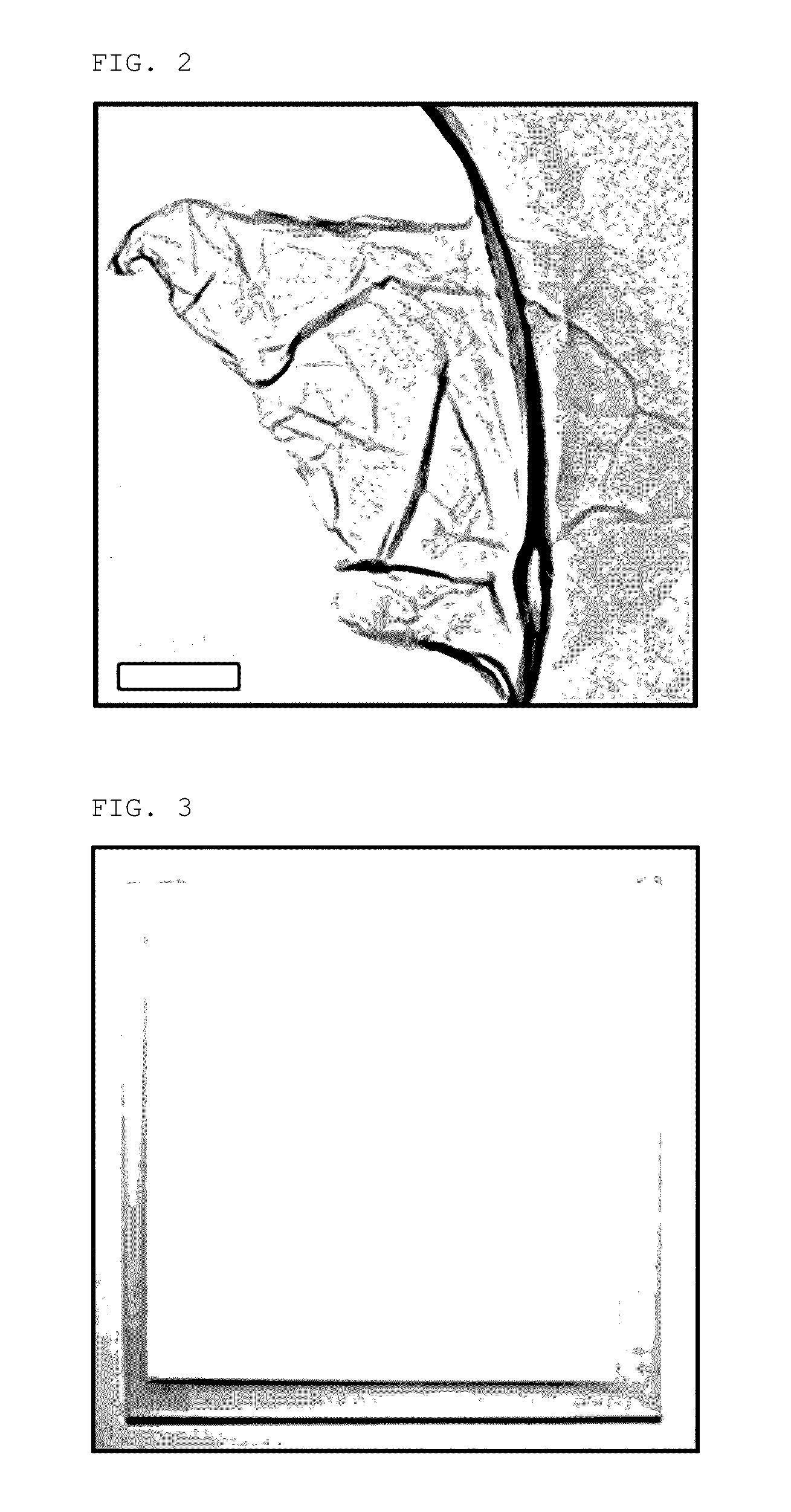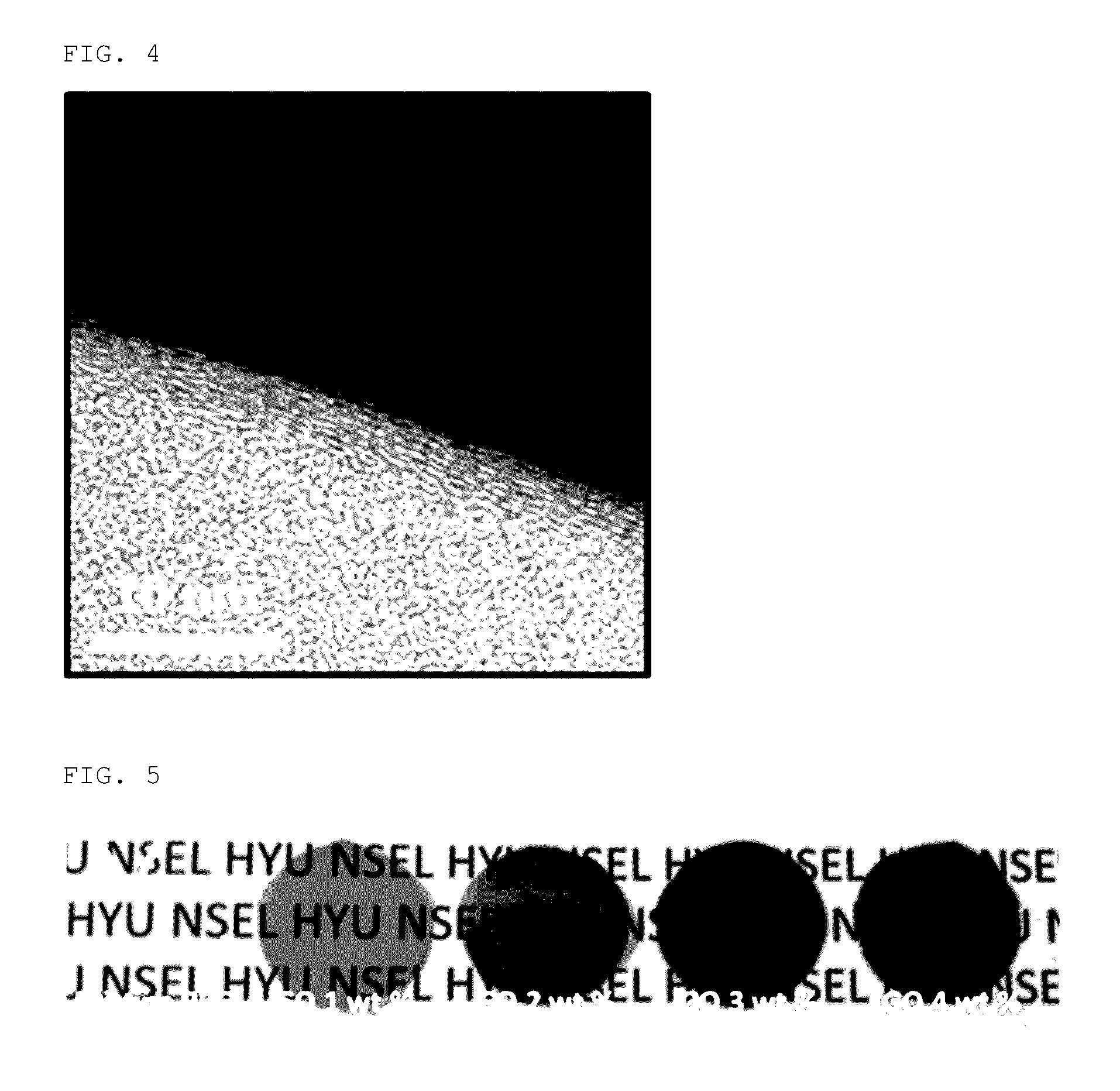Graphene oxide nanocomposite membrane having improved gas barrier characteristics and method for manufacturing the same
a graphene oxide nanocomposite and gas barrier technology, applied in the direction of transportation and packaging, container preventing decay, separation process, etc., can solve the problems of gas and ion molecules easily permeating, unable to maintain the barrier characteristics of gas and ion molecules, and thus lose the inherent barrier characteristics of ion molecules, etc., to achieve excellent barrier characteristics and simple structure
- Summary
- Abstract
- Description
- Claims
- Application Information
AI Technical Summary
Benefits of technology
Problems solved by technology
Method used
Image
Examples
example 1
[0081]Graphene oxide prepared by Hummers' method was distilled in distilled water and treated with an ultrasonic grinder for 3 hours to obtain a graphene oxide dispersion. The dispersion was centrifuged to form graphene oxide having a controlled size of 3 μm and the graphene oxide was dispersed in distilled water again to obtain a 0.1 wt % aqueous graphene oxide solution having a pH adjusted to 10.0 with a 1M aqueous sodium hydroxide solution. 1 mL of the aqueous graphene oxide solution was spin-coated on a porous polyether sulfone (PES) support 5 times to produce a graphene oxide nanocomposite membrane having a graphene oxide coating layer with a thickness of 10 nm.
example 2
[0082]A polyethylene glycol diacrylate (PEGDA) macromer (having number average molecular weight of 250) was mixed with deionized water in a weight ratio of 7:3 and stirred for 12 hours to obtain a homogenous solution. 1% by weight of graphene oxide prepared by Hummers' method and 0.1% by weight of hydroxycyclohexyl phenyl ketone as a photoinitiator with respect to the weight of the PEGDA macromer were added to the solution, and the resulting mixture was ultrasonicated for 2 hours and stirred for 24 hours to obtain a precursor solution. The precursor solution was cast on a glass plate and 312 nm UV was applied thereto under a nitrogen atmosphere for 5 minutes to produce a graphene oxide nanocomposite membrane (at this time, graphene oxide had a size of 270 nm or 800 nm and the content thereof was changed to 1, 2, 3, and 4% by weight with respect to the weight of the PEGDA macromer).
PUM
| Property | Measurement | Unit |
|---|---|---|
| thickness | aaaaa | aaaaa |
| thickness | aaaaa | aaaaa |
| diameter | aaaaa | aaaaa |
Abstract
Description
Claims
Application Information
 Login to View More
Login to View More - R&D
- Intellectual Property
- Life Sciences
- Materials
- Tech Scout
- Unparalleled Data Quality
- Higher Quality Content
- 60% Fewer Hallucinations
Browse by: Latest US Patents, China's latest patents, Technical Efficacy Thesaurus, Application Domain, Technology Topic, Popular Technical Reports.
© 2025 PatSnap. All rights reserved.Legal|Privacy policy|Modern Slavery Act Transparency Statement|Sitemap|About US| Contact US: help@patsnap.com



